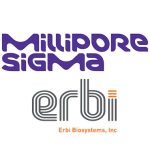The FDA’s 510(k) Program offers three types of premarket notification submissions: Traditional, Abbreviated and Special. The abbreviated and special 510(k) Programs were developed in 1998 and described in “The New 510(k) Paradigm: Alternate Approaches to Demonstrating Substantial Equivalence in Premarket Notifications” as alternate pathways to the Traditional route. In an effort to modernize the 510(k) Program, the FDA has recently issued four final guidances on the Special 510(k) Program, the Abbreviated 510(k) Program, the format for Traditional and Abbreviated 510(k)s, and the Refuse to Accept Policy for 510(k)s. The new guidance documents for the Special and Abbreviated 510(k) Programs supersede “The New 510(k) Paradigm”.
“The Special 510(k) Program” guidance document, issued in September 2019, describes an optional pathway for manufacturers that make certain well-defined modifications to their own legally marketed device. The guidance was developed to clarify existing policy and the types of changes that are appropriate for the program in an effort to improve the efficiency of 510(k) review, consistent with the FDA’s least burdensome principles. The program allows FDA and industry to rely on previous agency review of detailed information and manufacturers to provide the minimum required information necessary to establish substantial equivalence (SE) for a modified device. As a result, special 510(k)s are processed within 30 days of receipt by the Document Control Center instead of 90 days as for Traditional or Abbreviated 510(k)s.
The significant change to the Special 510(k) Program involves eligibility factors. The old policy focused on whether changes affected either the intended use or altered the fundamental scientific technology of the device. These types of changes would be deemed inappropriate for the Special 510(k) Program and trigger FDA to convert the submission to a Traditional 510(k). Under the new policy, certain changes to the indications for use are permitted, and the focus has shifted to whether the methods to evaluate the change are well-established and whether the results can be sufficiently reviewed in a summary or risk analysis format.
The three main factors to consider when determining whether a change to an existing device may be appropriate for a Special 510(k) are the following:
- The change must be to the submitter’s own legally marketed predicate device
- Performance data are either not required, or if deemed necessary to evaluate the change, well-established methods are available
- All performance data to support a substantial equivalence determination can be reviewed in a summary or risk analysis format
The Special 510(k) Program leverages design controls requirements and procedures and previously submitted information to enable a summary level review in 30 days. The assumption is that a manufacturer that modifies its own device is able to conduct the necessary risk analysis and verification/validation activities to demonstrate the design outputs meet the design inputs of the modified device.
If a manufacturer determines that no additional verification or validation testing is necessary, a rationale supporting the conclusion must be provided. If performance data is submitted to support a SE determination, it should not include complete test reports, but instead, summary information generated from well-established methods. The FDA defines well-established methods as “those that have been established for evaluation of the device, device type, or scientific topic area, and are validated according to scientific principles.” These may include:
- The same methods and acceptance criteria used for the predicate device (previously cleared)
- Methods from FDA-recognized voluntary consensus standards or FDA guidance documents
- Qualified medical device development tools (MDTTs)
- Methods published in the public domain or scientific literature that are widely accepted
All test methods used to support a Special 510(k) should be well established. The FDA may accept minor deviations to a protocol or acceptance criteria of a well-established method.
Summaries of the verification and validation activities should describe how the methods applied are appropriate for the change, the acceptance criteria, a summary of the results and any changes or deviations from methods used in the previously cleared submission. Tabular formats are encouraged (examples are provided in Appendix C of the guidance document) and redlined copies of modified documents are acceptable. Manufacturers may also submit risk management documentation, such as Design Failure Modes and Effects Analysis (DFMEA). To facilitate efficient review, the summaries should focus on the information that is relevant to the changes under review.
Some examples of scenarios in which the data to support the SE determination is not appropriate for a Special 510(k) include:
- The test methods are not considered well-established (e.g. clinical, animal, or cadaver studies)
- The data depends on FDA‘s interpretation (e.g. raw graphs, line item data, or images)
- Evaluation of the change involves more than three scientific disciplines (e.g. software, biocompatibility, and electrical safety) that can complicate and prolong the review
- Changes from single-use to reusable (when human factors data or reprocessing validation is required)
If FDA does not agree that the submitted performance data can be summarized or that well-established methods were used to support SE, then the submission will be converted to a Traditional 510(k). It is important to note that the 510(k) conversion process can result in delayed review and often results in FDA refusing to accept the converted 510(k) due to the difference in content between the two types of submissions (i.e., complete test reports are not submitted with a Special 510(k), but are required for a Traditional 510(k)). Therefore FDA recommends that submitters consider the presubmission process to obtain feedback on whether their proposed test methods would be considered well established and/or whether performance data can be sufficiently summarized. Appendix B of the guidance document contains numerous examples of changes that can and cannot be submitted as Special 510(k)s.
It is important to note that not all changes to existing medical devices require a new 510(k). According to 21 CFR 807.81(a)(3), changes that require premarket notification are those that “could significantly affect the safety or effectiveness of the device” or “a major change or modification in the intended use of the device”. FDA recommends that manufacturers use a risk-based assessment approach to determine whether a new 510(k) is likely required, as outlined in FDA’s guidance “Deciding When to Submit a 510(k) for a Change to an Existing Device”. Once the determination has been made that a new 510(k) is likely required, the manufacturer can engage in the decision-making process to establish whether the change is appropriate for review under the Special 510(k) Program.






